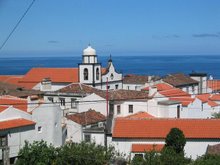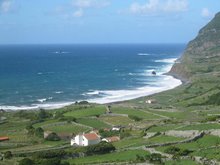
I'm regularly asked about this, so here goes:-
The country I am a national of and used to live in is called The United Kingdom of Great Britain and Northern Ireland.
It is quite acceptable to call this for short Britain or the UK.
It is not acceptable to call it England, Great Britain or GB.
England is the name of a historical part of the UK and to confuse the two is a solecism akin to calling the old Soviet Union Russia.
Great Britain is the name of an island - the big one off the coast of France which London is on. It's not the name of a country. Having said that, by quirks of history, "GB" denotes the UK in the following limited circumstances:-
* GBP is the recognised international abbreviation for the British currency, the pound sterling.
* GB are the initials you put on your car to signify it is British.
* GBR is the recognised abbreviation for the UK in international sports competitions.
While we're on the subject of sport, if you've been paying attention so far you will already have spotted that the UK is the only country in the world which gets to enter more than one team in international football competitions: four, in fact, these being England, Scotland, Northern Ireland and Wales. (These four separate teams also represent the UK at the Commonwealth Games.)
Historically, there were two separate kingdoms, England and Scotland. In 1603, King James VI of Scotland inherited the throne of England upon the death without nearer heirs of his cousin, Queen Elizabeth I. He thereby became King James I of England but it must be emphasised that the two kingdoms remained separate and independent of each other (legally, if not always in practice): it was just that the same guy happened to be the king of two different kingdoms.
In 1707, England and Scotland formally merged to become a single United Kingdom of Great Britain.
Wales' warring petty principalities had not quite got their acts together to merge into a single state by the 13th century when they were all conquered by England: in 1301, King Edward I of England conferred the title Prince of Wales on his son and heir. Ever since, the heir to the throne of England/the UK (the "Crown Prince" although that's not a term used in Britain) has been known as the Prince of Wales: the current holder is Prince Charles. Wales was formally incorporated into England in 1536.
Ireland's warring petty kingdoms also hadn't quite got it together when they too were invaded by England in the 13th century. The kings of England styled themselves Lord of Ireland until 1541, thereafter King of Ireland - another case of one king, two kingdoms (three after 1603).
In 1801, Ireland was formally merged with the UK to form The United Kingdom of Great Britain and Ireland.
In 1922, 26 of Ireland's 32 counties seceeded from the UK to form the Irish Free State with its capital at Dublin. This was like Canada and Australia remain to this day: independent of the UK but with the monarch of the UK as its formal head of state. The IFS became the Republic of Ireland 1949.
In 1927, meanwhile, the UK had assumed its present title of the United Kingdom of Great Britain and Northern Ireland.
Northern Ireland - the part of Ireland which remains a part of the UK - is often referred to as Ulster but that is a mistake as well because Ulster was an ancient province of Ireland which includes the County of Donegal which was amongst those which seceeded from the UK in 1922 and is now in the Republic of Ireland.
A word or two about the Irish "troubles" as we call them with characteristic British understatement. When "the 32 counties" seceeded from the UK in 1922, this was a partition along ethnic lines exactly the same as India/Pakistan in 1947 and the messy break up of Yugoslavia in the 1990s. The population of the "6 counties" (Northern Ireland) which remained in the UK was majority Protestant in contrast to the Roman Catholic majority in the rest of Ireland. But of course, it's impossible to draw a nice neat line of demarcation and the Catholic minority left in NI began an intifada in the 1970s. This was brought to an end by an agreement in 1998.
Since the 1990s NI, Scotland and Wales have had regional autonomy from the UK - just as the Azores and Madeira have autonomy from Portugal but we call it "devolution" in Britain.
I hope you've been paying attention to all that because I'll be asking questions later ...
PS - another thing which gets on my wick: there's no such thing as "the British Navy" - it's called the Royal Navy. This is a mistake sometimes even the BBC makes. Tsk ...




5 comments:
Were you aware that the Royal Navy had a couple of, ahem, notable encounters in the Azores?
1. Ponta Delgada das Flores.
Judging from the title of your blog, you're already aware that in 1591 Her Majesty's Ship The Revenge, under the command or Sir Richard Grenville, experienced an unfortunate incident at the hands of the Spanish just up the coast from you a few miles in the channel between Flores and Corvo, which Alfred Lord Tennyson famously commemorated centuries later in his poem "The Revenge." I recall reading that the ship limped away, then soon sank off the coast of Terceira:
http://en.wikipedia.org/wiki/HMS_Revenge_(1577)
http://en.wikisource.org/wiki/The_Revenge:_A_
Ballad_of_the_Fleet
2. Fayal [sic] Roads.
The final naval battle between the US and British during the War of 1812 occurred in this channel between Horta, Faial, and Madalena do Pico. Americans were also in Horta's waterfront fort (nowadays renovated as the pousada "Estalagem Santa Cruz"). During the British siege of the fort, one of Consul John Bass Dabney's sons served as a messenger between his father at the Consulate and the fort.
See "Exploit at Fayal," American Heritage Magazine, June 1959 (10:4):
http://www.americanheritage.com/articles/magazine
/ah/1959/4/1959_4_60.shtml
No hard feelings, mate?
My understanding is that the Revenge was captured by the Spanish and crewed by them and sent back east only to get no further than Terceira where it was wrecked in a storm with the loss of much Spanish life. Also, that Howard's fleet was not the Royal Navy as such but a band of privateers in the service of the English crown.
1. Right you are re it being numerous Spaniards who drowned when HMS Revenge sank off Terceira -- served 'em right! However, Grenville's judgment in heading the Revenge right through the Spanish fleet instead of around to the other side of Corvo remains forever dubious, and he paid the ultimate price for it a few days later.
2. From "The General Armstrong
and the War of 1812":
"The American privateer, the GENERAL ARMSTRONG[,] is taking on water and supplies. Three British men-of-war suddenly appear in the harbor. Crews from His Majesty's Ships Plantagenet, Rota and Carnation attempt to board the American ship..."
From:
http://libraryautomation.com/warof1812
(includes 3 accounts of the Fayal Battle)
I'm confused here: Would those "[t]hree British [sic] men-of-war" -- not to be confused, of course, with Physalia physalis (LOL!) -- have been part of the Royal Navy? The General Armstrong, OTOH, was not part of the USN, though ostensibly under contract to it. Certainly US Consul John Bass Dabney was involved in trying to resolve the dispute.
I don't believe privateers were entitled to the designation HMS so I think we can take it that the Plantagenet etc. were regular Royal Navy ships (and that it's not quite correct to refer to the Revenge as HMS).
Considering where you live, perhaps you're the UK folks best-qualified in the whole world to research and publish histories of these historic events!
Post a Comment